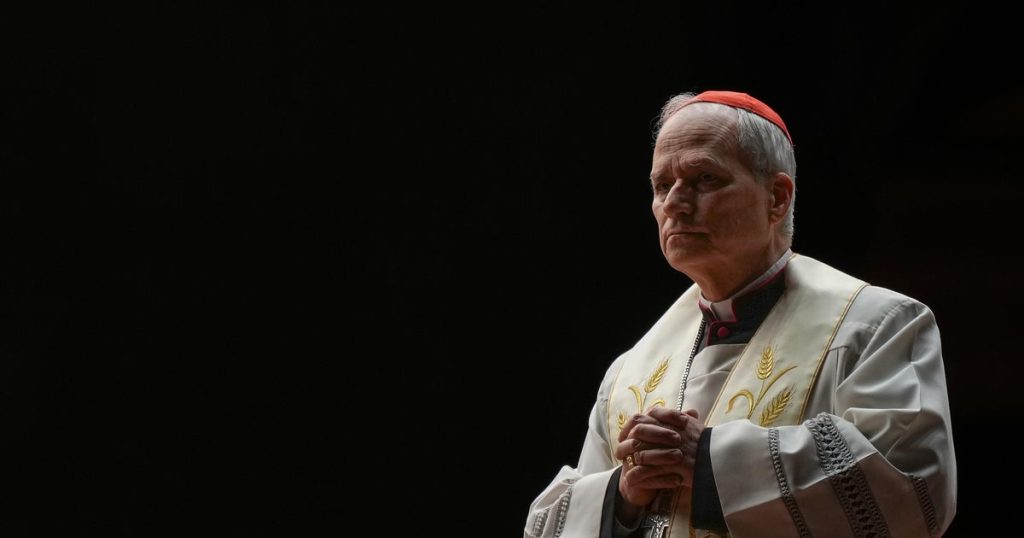In a significant moment for the Catholic Church, the ongoing papal conclave presents a potential shift in leadership as Bishop Robert Barron discusses the prospects of an American becoming the next pope. Despite the United States never having produced a pope among the 266 who have served, discussions around candidates like Cardinal Robert Prevost have sparked intrigue. This article explores the factors influencing the selection process and the implications it may have for the global Catholic community.
| Article Subheadings |
|---|
| 1) Historical Context of American Popes |
| 2) The Significance of Cardinal Robert Prevost |
| 3) Bishop Barron’s Insights on American Leadership |
| 4) The Current Papal Conclave Dynamics |
| 5) Future Implications for the Catholic Church |
Historical Context of American Popes
The absence of an American pope in the history of the Catholic Church is noteworthy given the size and influence of the Catholic population in the United States. Since the declaration of independence in 1776, only a few American clerics have been considered for the papacy. Historically, the papacy has been dominated by European figures, predominantly from Italy. This historical precedent raises questions about the barriers, both cultural and political, that prevent an American from ascending to the papal throne.
The Significance of Cardinal Robert Prevost
As a prominent figure in the current discussions surrounding the next pope, Cardinal Robert Prevost emerges as a leading candidate. His extensive background as the head of the Catholic Church’s Dicastery for Bishops positions him uniquely as he supervises the appointment of bishops worldwide. Though the eligibility criteria are minimal—candidates must be male and Roman Catholic—Prevost’s dual nationality (American and Peruvian) and his experience in both contexts might play a crucial role in gaining broader acceptance among the cardinal electors.
Bishop Barron’s Insights on American Leadership
Bishop Robert Barron has been vocal about the challenges facing American candidates for the papacy. He references a poignant statement from the late Cardinal Francis George, suggesting that as long as America holds a position of global power, the election of an American pope would remain unlikely. This viewpoint speaks to deeper cultural apprehensions within the Church about U.S. dominance in various spheres, including religion. Barron’s insights provide a lens through which the political and cultural implications of a potential American pope can be examined.
The Current Papal Conclave Dynamics
The conclave, consisting of 133 cardinal electors, is currently engaged in deliberations to select the next pope. Cardinal Prevost’s candidacy has gained significant traction, but ultimately, the decision will rest on attaining the necessary two-thirds majority from the electors. The deliberative process is not only about choosing a leader but also reflects the internal dynamics and power structures of the Roman Catholic Church. The electors’ discussions have included not just candidate qualifications but also the broader implications of their leadership style and doctrinal stances on pressing social issues.
Future Implications for the Catholic Church
The potential election of an American pope or any candidate with Western leanings could have far-reaching consequences for the future of the Catholic Church. This selection may alter the Church’s approach to global issues like migration, social justice, and the evolving role of women. Interest in leaders who embrace progressive stances, particularly in current social contexts, may shift how the Church engages with both adherents and critics alike. As the world watches the outcomes of the conclave, the future direction for the Catholic Church becomes a critical topic amidst changing societal values.
| No. | Key Points |
|---|---|
| 1 | The United States has never produced a pope among its 266 predecessors. |
| 2 | Cardinal Robert Prevost is a leading candidate for the papacy. |
| 3 | Bishop Robert Barron highlights political factors affecting papal nominations. |
| 4 | The papal conclave consists of 133 cardinal electors deliberating potential leaders. |
| 5 | The future leadership could redefine the Church’s stance on social issues. |
Summary
The ongoing papal conclave represents a pivotal moment for the future of the Catholic Church, particularly with discussions centering on Cardinal Robert Prevost. As the cardinals deliberate, Bishop Barron’s insights reveal the complex interplay of cultural and political sentiments surrounding American candidates for the papacy. The outcomes of this conclave will not only affect the Catholic Church’s direction but may also influence its engagement with global societal issues.
Frequently Asked Questions
Question: Why has the United States never produced a pope?
Historical and cultural factors, including America’s position as a global power, contribute to the reluctance of the Church to elect an American pope.
Question: Who is Cardinal Robert Prevost?
Cardinal Prevost is the head of the Dicastery for Bishops and is a prominent candidate for the papacy during the current conclave.
Question: What role do political factors play in the papal election?
Political dynamics, such as America’s global influence, may hinder the election of an American pope, as outlined by Bishop Robert Barron.


